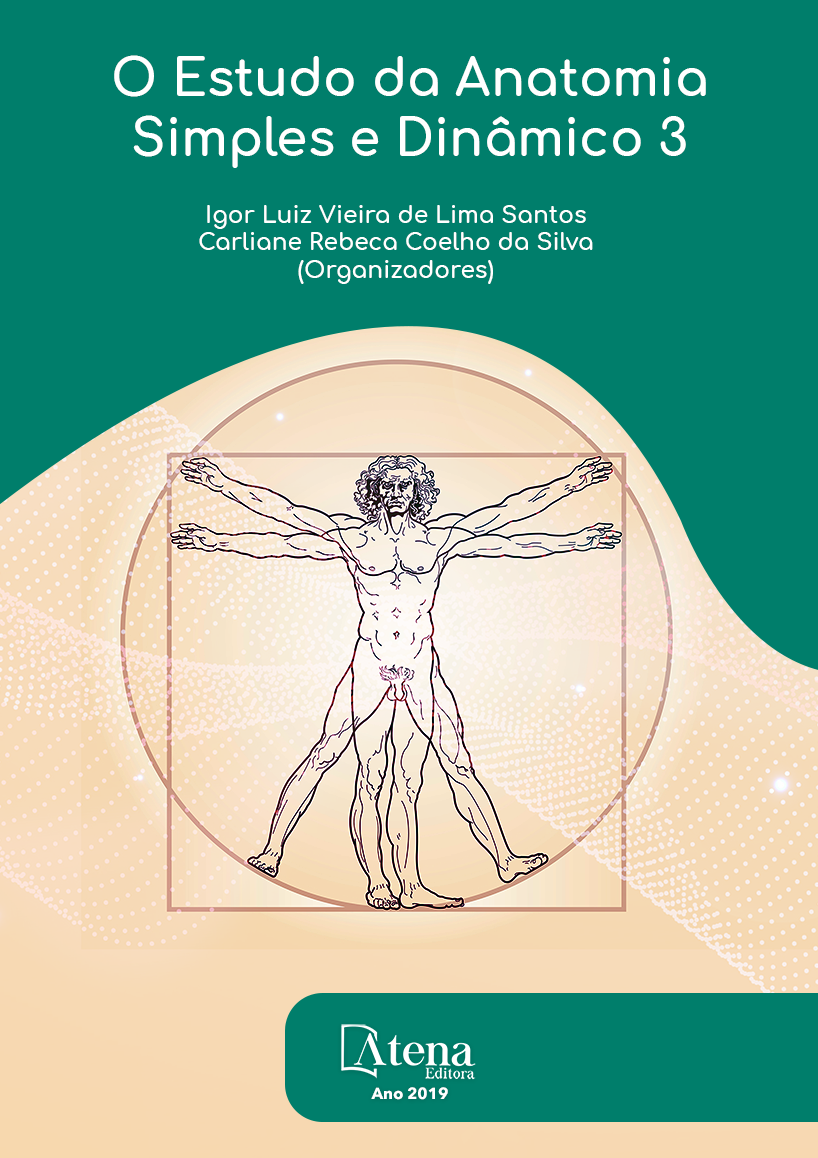
USO DA ANATOMIA HUMANA FETAL COMO ALTERNATIVA AO DÉFICIT CADAVÉRICO: RELATO DE EXPERIÊNCIA DO DISCENTE
Sabe-se que as tendências atuais
na área de educação médica tornam o aluno o
protagonista do próprio processo de formação
através das metodologias ativas de ensinoaprendizagem,
segundo a CNE/CES 116/2014.
Diante dessa realidade, diferentes estratégias de
ensino da anatomia humana têm sido utilizadas
na apropriação dos conceitos anatômicos.
Como alternativa, o estudo científico utilizando
fetos humanos ou natimortos faz-se presente
para corroborar com o entendimento das
estruturas anatômicas igualmente aos
cadáveres humanos adultos. Por tais razões,
o estudo objetiva explanar que as diferentes
possibilidades de construção dos processos
de ensino e aprendizagem da anatomia
humana em fetos podem sinalizar caminhos
promissores para a elaboração de práticas
educativas efetivas. Trata-se de um estudo
descritivo desenvolvido a partir da vivência de
monitores no laboratório de Anatomia Humana
do Centro Universitário Tiradentes (UNIT/
AL), que diante das dificuldades de manuseio
com cadáveres adultos, obteve oportunidade
de dissecção com fetos humanos. Foram
utilizadas as bases de dados informatizadas
do Portal da Capes, PubMed, SciELO,
BIREME, LILACS e MEDLINE, MEDCARIB,
como revisão de literatura. Por conseguinte,
o aprendizado é magnificado quando o aluno
é levado a despertar interesse ao entender
que os diferentes órgãos em processo de
desenvolvimento, pouco diferem dos órgãos
adultos. Dessa forma, destaca-se a relevância
da prática de pesquisas em cadáveres fetais
humanos a fim de aumentar a compreensão,
incentivando a busca e elaboração de novas
formas de aprendizagem e conhecimento,
pois o tema é de pouco conhecimento prático.
USO DA ANATOMIA HUMANA FETAL COMO ALTERNATIVA AO DÉFICIT CADAVÉRICO: RELATO DE EXPERIÊNCIA DO DISCENTE
-
DOI: 10.22533/at.ed.43019250923
-
Palavras-chave: Metodologias ativas. Ensino médico. Anatomia humana. Morfologia fetal. Estudo morfológico fetal.
-
Keywords: Active methodologies. Medical education. Human anatomy. Fetal morphology. Fetal morphological study.
-
Abstract:
Teaching opportunities in the training of teaching-learning teachers,
according to CNE / CES 116/2014. In view of this reality, the different teaching strategies
of the human anatomy have been used in the appropriation of the anatomical concepts.
Alternatively, the event can be used based on humans or stillbirths, so that it is compatible
with anatomical structures and similar to adult adults. For these reasons, the purpose
of this study is to make explicit that the different possibilities of construction of the
teaching and learning processes of the human anatomy can signal promising paths for
the elaboration of effective educational practices. This is a descriptive study developed
from the experience of monitors of the Laboratory of Human Anatomy of the Tiradentes
University Center (UNIT/AL), which followed the difficulties with the use of adults, the
opportunity of dissection with human rights. It was used as computerized databases of
the Portal of Capes, PubMed, SciELO, BIREME, LILACS and MEDLINE, MEDCARIB, as
literature review. Because of this, learning is magnified when the student is drawn to an
awakened interest in differentiating the process in a developmental process, somewhat
different from the adult organs. In this way, it is worth noting the practice of research in
fetal notebooks with the purpose of increasing understanding, encouraging the search
and formation of new forms of learning and knowledge, since the subject is self-aware.
-
Número de páginas: 15
- Eduarda Cavalcante Santana
- Klaus Manoel Melo Cavalcante
- Labibe Manoela Melo Cavalcante
- Marcelo Augusto Vieira Jatobá
- Ernann Tenório de Albuquerque Filho


